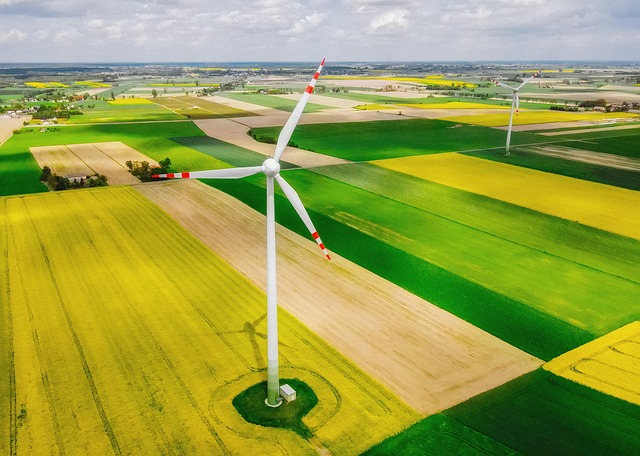
Clean Energy Revolution: Powering a Sustainable Tomorrow
As the world grapples with the undeniable impact of climate change, the need for sustainable energy solutions has never been more critical. The transition from fossil fuels to clean energy sources is underway, marking a clean energy revolution that promises to reshape our economy, environment, and society. This article delves into the myriad aspects of this revolution, exploring its drivers, technologies, benefits, challenges, and the path forward.
The Urgency of Transitioning to Clean Energy
Global temperatures are rising, glaciers are melting, and severe weather phenomena are becoming increasingly common. These changes are, in large part, driven by our reliance on fossil fuels, which account for a substantial portion of greenhouse gas emissions. The clean energy revolution seeks to address these urgent issues by reducing our carbon footprint and promoting a sustainable future.
The effects of climate change are not simply environmental crises; they threaten food security, health, and economic stability worldwide. This pressing reality underscores the necessity of transitioning to renewable sources of energy, which are abundant, sustainable, and increasingly cost-effective.
Understanding Clean Energy
Clean energy encompasses a variety of energy sources that are derived from natural processes that are continuously replenished. These typically include solar, wind, hydroelectric, geothermal, and biomass energy. Each of these technologies offers distinct advantages and challenges, but all contribute to reducing dependency on fossil fuels.
Solar Energy
Solar energy harnesses the power of the sun through photovoltaic cells or solar thermal systems. As one of the most abundant sources of energy, solar power has been transforming rooftops and landscapes around the world. Its declining costs have made it increasingly accessible to individuals and businesses alike.
Wind Energy
Wind energy relies on the kinetic energy of moving air, which is converted into electricity through wind turbines. Offshore and onshore wind farms are being developed globally, contributing significantly to national and local energy grids. As technology improves and costs decrease, wind energy has become one of the fastest-growing energy sources.
Hydroelectric Energy
Hydroelectric power uses the energy of flowing water to generate electricity. Dams and run-of-the-river systems facilitate this process. While hydroelectricity is a reliable and established energy source, it raises environmental concerns regarding aquatic ecosystems and habitat displacement, necessitating careful planning and management.
Geothermal Energy
Geothermal energy taps into the Earth’s internal heat, providing a stable and environmentally friendly energy source. It offers baseload energy—electricity generated consistently regardless of time of day or weather conditions—and is particularly effective in regions with volcanic or tectonic activity.
Biomass Energy
Biomass energy comes from organic materials, such as plant and animal waste, which can be converted into electricity, heat, or biofuels. This form of energy not only helps reduce waste but also utilizes existing carbon in a closed loop, making it a potentially sustainable option when managed responsibly.
The Drivers of the Clean Energy Revolution
Several factors are propelling the transition to clean energy, each intersecting with economic, environmental, and social facets of change.
The Environmental Imperative
The environmental impacts of fossil fuel consumption—air and water pollution, habitat destruction, and climate change—have created an urgent demand for cleaner alternatives. Sustainability has become a guiding principle, framing energy production as a moral and ethical responsibility to future generations.
Technological Advancements
Ongoing innovations in energy technology are making clean energy more efficient and affordable. From enhanced energy storage solutions, such as batteries, to smart grid technologies that optimize energy usage, these advancements improve the reliability and accessibility of renewable energy sources.
Economic Considerations
With the price of renewable energy technology decreasing significantly over the past decade, the economics of energy production are shifting. Investments in clean energy are becoming increasingly attractive, generating new jobs and supporting local economies. The declining costs of solar panels, wind turbines, and electric vehicles create financial incentives for consumers and businesses alike.
Legislative and Policy Support
Governments across the globe are recognizing the necessity of transitioning to clean energy and are implementing policies to incentivize its adoption. These policies range from tax credits and subsidies for renewable energy projects to stringent regulations on carbon emissions. This collaborative effort reinforces the commitment to clean energy as a national and global priority.
Benefits of a Clean Energy Future
The transition to clean energy carries numerous benefits that extend beyond greenhouse gas reduction. These advantages encompass economic growth, energy independence, and improved public health.
Economic Growth and Job Creation
The clean energy sector has emerged as a significant driver of job creation. From manufacturing solar panels to constructing wind farms and developing energy-efficient technologies, millions of jobs are being generated, many of which cannot be outsourced. This sector is pivotal to revitalizing local and national economies.
Energy Independence
By investing in renewable energy, countries can reduce their reliance on imported fossil fuels, fostering energy independence. This shift mitigates the risks associated with fluctuating global energy markets and enhances national security.
Public Health Improvement
The pollution resulting from fossil fuel combustion has serious health ramifications, including respiratory illnesses, cardiovascular diseases, and premature deaths. Transitioning to clean energy sources can significantly reduce these health risks, improving overall public health and lowering healthcare costs.
Challenges to Overcome
While the clean energy revolution is promising, it is not without its challenges. Addressing these obstacles requires coordinated efforts, innovative solutions, and ongoing commitment.
Intermittency and Reliability
One of the significant challenges facing renewable energy is its intermittency—solar and wind energy production fluctuates based on weather conditions and time of day. To overcome this issue, advancements in energy storage, such as batteries, and diversified energy generation systems must be prioritized.
Infrastructure Development
The shift to clean energy necessitates significant changes in existing infrastructure, including updated power grids and energy distribution systems. Investments in modernized infrastructure are essential to accommodate the growing demand for renewable energy.
Public Perception and Adoption
Transitioning to clean energy requires a cultural shift in how society views energy consumption. Education and outreach initiatives are crucial to inform the public about the benefits of clean energy and dispel misconceptions surrounding its reliability and effectiveness.
The Path Forward: A Collaborative Approach
To achieve a sustainable future, collaboration among governments, businesses, and communities is paramount. Transitioning to clean energy is a multi-faceted challenge that cannot be solved by a single entity alone. A collective approach, involving stakeholders from various sectors, will ensure that progress is accelerated and sustained.
Furthermore, clean energy innovation must be supported through research and development, fostering breakthroughs that can catalyze the industry. Education and workforce training will empower the next generation, equipping them with the skills necessary to thrive in a clean energy economy.
Conclusion
The clean energy revolution is not merely an option; it is an imperative for achieving a sustainable tomorrow. By harnessing the power of renewable energy, we can tackle climate change, enhance public health, and stimulate economic growth. Although challenges lie ahead, the journey towards a cleaner, greener future is filled with opportunities for innovation, collaboration, and progress. Together, we can forge a new path toward a sustainable and prosperous world, powered by clean energy.



